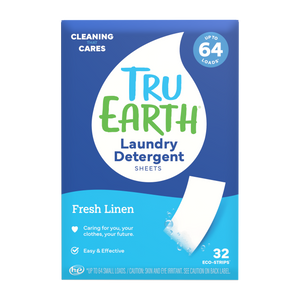Maintaining a regular schedule for changing your furnace filter is a simple yet key aspect of ensuring your heating system's optimal performance.
In this guide, we'll explore the details of why, when, and how often you should change your furnace filter to keep your home comfortable and your HVAC system running efficiently.

The Role of the Furnace Filter
Before looking into the frequency of filter changes, it's essential to comprehend the vital role your furnace filter plays.
The filter serves as a barrier, trapping dust, debris, allergens, and pollutants, preventing them from circulating through your home. A clean filter ensures improved indoor air quality and protects your heating system from unnecessary strain.
Factors Influencing Filter Lifespan
Several factors influence how quickly a furnace filter becomes clogged and, subsequently, how often it needs replacement.
These factors include the type of filter, the level of household pollutants, and whether you have pets. Understanding these variables will help tailor your filter replacement schedule to suit your specific circumstances.
Types of Furnace Filters
Furnace filters come in various types, each with its own lifespan and filtration efficiency. Common types include fiberglass, pleated, electrostatic, and HEPA filters. While fiberglass filters are budget-friendly, they typically require more frequent replacement.
Pleated and electrostatic filters offer better filtration and durability, often requiring replacement every three to six months. HEPA filters provide the highest level of filtration but may need replacement more frequently.
Recommended Replacement Intervals
Understanding the unique needs of your household is key in determining the optimal replacement interval for your furnace filter. For households with pets or individuals prone to allergies, adopting a more frequent monthly replacement schedule becomes essential to maintaining indoor air quality.
On the other hand, homes with minimal pollutants and no furry companions can benefit from a more extended replacement interval of up to three months, ensuring efficiency while minimizing unnecessary filter changes.
Regularly assessing these factors ensures a balanced approach to furnace filter maintenance, contributing to both the longevity of your HVAC system and the well-being of your living space.
Signs It's Time for a Replacement
Let's take a closer look at the telltale signals that it's time to bid farewell to the old and welcome in the new for your furnace filter.
Reduced Airflow
If you notice a decline in the airflow from your vents, it could be a sign that your furnace filter is becoming clogged with debris. This reduction in airflow puts a strain on your HVAC system, hindering its efficiency.
Addressing this issue promptly not only ensures a comfortable living environment but also prevents potential long-term damage to your heating system, saving you from costly repairs.
Increased Energy Bills
A sudden spike in your energy bills might be attributed to a clogged filter. When the filter is dirty, your heating system needs to work harder to push air through, resulting in increased energy consumption and higher bills.
Regularly replacing your filter not only helps in optimizing energy efficiency but also contributes to a greener and more cost-effective household, aligning with eco-conscious living practices.
Visible Dirt on the Filter
Regularly inspecting your furnace filter is a good practice. If you observe a buildup of visible dirt and debris on the filter, it's a clear indication that it's time for a replacement. A dirty filter restricts airflow and diminishes its effectiveness.
By staying vigilant and replacing the filter as needed, you not only ensure optimal HVAC performance but also prolong the life of your heating system, reducing the frequency of major repairs or replacements.
Uptick in Allergy Symptoms
An unexpected increase in allergy symptoms among household members could be linked to a dirty or inefficient filter. As the filter accumulates dust and allergens, it fails to effectively trap them, leading to poorer indoor air quality.
Regularly changing your filter not only helps alleviate allergy symptoms but also promotes a healthier living environment, making your home a more comfortable and safe space for everyone.
DIY Filter Replacement
Changing your furnace filter is a straightforward task that can be done with minimal tools and expertise. Begin by locating the filter—usually situated near the furnace or air handler.
Turn off the furnace, remove the old filter, and insert the new one, ensuring it's positioned correctly. Regular DIY replacements not only save you money but also contribute to the longevity of your heating system.
Professional Maintenance
While DIY filter changes are essential, annual professional HVAC maintenance is equally important. A certified technician can inspect and service your entire heating system, addressing issues beyond the filter.
Professional maintenance enhances system efficiency, extends its lifespan, and ensures your home stays warm during the colder months.

Having a Better Grasp of Furnace Filter Care
The frequency of changing your furnace filter is a key element in maintaining a comfortable and healthy home environment.
By understanding the factors influencing filter lifespan, recognizing signs of a needed replacement, and embracing a proactive approach to HVAC maintenance, you'll keep your heating system running smoothly. Regular filter changes not only enhance indoor air quality but also contribute to energy efficiency, saving you money in the long run.

